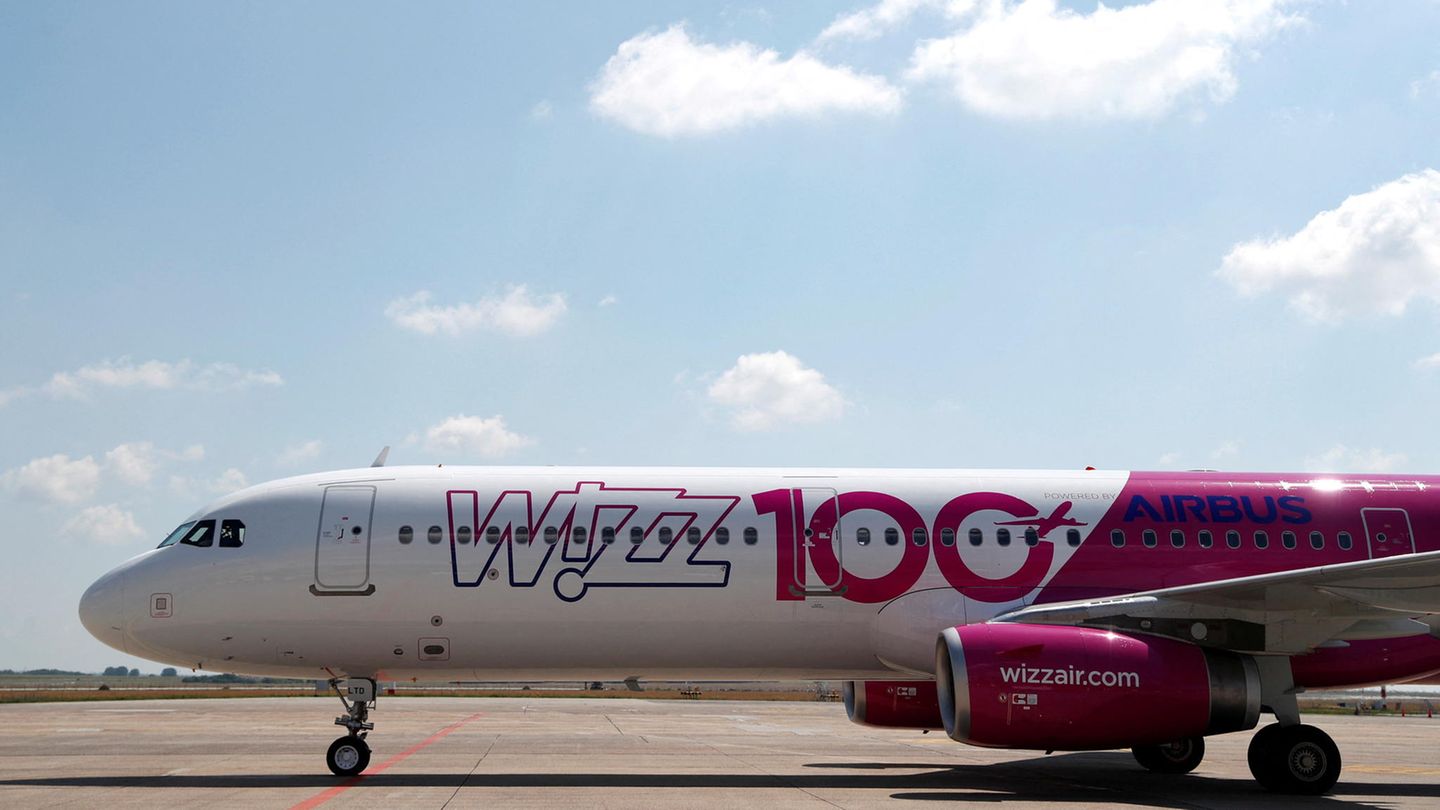The Hungarian low-cost airline Wizz Air wants to fly with climate-neutral kerosene made from excrement in the future – as the first airline in the world to do so. Is this serious and does it make sense?

This is original content from the Capital brand. This article will be available for ten days on stern.de. After that, you will find it exclusively on capital.de. Capital, like the star to RTL Germany.
It sounds pretty absurd: kerosene from excrement. Even for a cheap advertising slogan – which some budget airlines are not above using – it doesn’t seem very appealing. So what is behind the announcement with which Europe’s third-largest budget airline is attracting attention in specialist circles?
First the facts: Wizz Air, the rapidly expanding Hungarian low-cost airline, announced in April that it plans to use up to 525,000 tons of climate-neutral kerosene made from feces from 2028. The company has agreed this contractually with the British start-up Firefly. Firefly has developed a process to produce sustainable fuel for aircraft from sewage sludge. Wizz Air wants to be the first airline to use this in four years. The number three airline behind Ryanair and Easyjet currently operates a good 200 Airbus aircraft, and this number is expected to rise to 500 by the end of the decade.
Green kerosene becomes mandatory
This is a cause for concern, because the enormous CO2 emissions are one of the biggest problems in aviation. Most experts believe that the solution lies in the use of sustainable fuel. Research institutes and companies have been working on the production of so-called Sustainable Aviation Fuels (SAF) for years. Many different processes are being tested, and the first aircraft with SAF additives are in use – including at Lufthansa. However, there is still no industrial standard and no large-scale production.
However, this will have to change in the foreseeable future, as the EU Commission has now massively increased the pressure: From next year, airlines in Europe will have to cover at least two percent of their fuel requirements with sustainable fuel. From 2030, this will be six percent, and then 70 percent in 2050. The production of sustainable fuel must therefore get going soon. So far, around 600 million liters of SAF are produced worldwide, which corresponds to only around 0.2 percent of kerosene consumption.
Fossil kerosene can be replaced – even with unusual substances such as frying oil or algae. In addition to plant-based raw materials, complex synthetic processes are also being tested that do not use natural resources. While some waste materials or raw materials are only available in limited quantities or are simply too expensive, there are large quantities of household feces everywhere. “I don’t find this approach at all absurd,” says Ulf Neuling, fuels project manager at the Agora Verkehrswende initiative, when asked by Capital. Sewage sludge is already being used as fertilizer on fields, for example, but also to produce biological fuels.
Aviation expert Dirk Niemeier, Director at Strategy&, PwC’s strategy consultancy, is also familiar with this. The company started a project in 2017 to produce fuel from sewage sludge – in this case it was diesel. However, he believes that the approval of the raw material and process for producing biological kerosene will remain a challenge. Sewage sludge is usually heavily contaminated with heavy metals and other substances such as phosphorus, which first have to be separated.
Hydrothermal liquefaction
It is therefore worth taking a look at the process that Wizz Air’s British partner wants to use. Firefly plans to process the sludge from Britain’s sewage treatment plants using hydrothermal liquefaction. The wet waste is treated with high pressure and heat and separated into crude oil and a powder. This powder can be used as fertilizer in the agricultural industry. The crude oil, in turn, is to be processed into sustainable aviation fuel. This is very similar to fossil kerosene, the start-up explained at the presentation, and has been tested by expert laboratories in the UK, the EU and the USA. The fuel’s CO2 emissions are 92 percent lower than those of fossil fuel.
However, it still needs to be certified for use in aviation. The process is currently ongoing. If the authorities grant their permission, this could well mean a breakthrough for excrement in tanks. “The process is promising, well-tested in research and relatively inexpensive,” says Agora representative Neuling. “That would be quite progressive.”
There is plenty of sewage sludge
The product is not yet ready for the market. “The process is still in its early stages and proof of economic large-scale implementation and approval for air traffic is still pending,” says Strategy& consultant Niemeier. According to Firefly, a pilot plant is to be built in the coming months. However, the company is still negotiating with investors to finance a factory.
The question remains whether there is enough sewage sludge – or to put it another way: how far can the excrement carry us? According to Strategy& consultant Niemeier, there is a sewage sludge volume of two to three million tons in Europe. This could be used to produce 150,000 to 300,000 tons of sustainable fuels. However, around 60 percent of sewage sludge is currently used for other purposes – for example, to generate heat or electricity. Around 40 percent is used as fertilizer in agriculture. Globally, sewage sludge volumes are expected to grow to 50 to 150 million tons. “This means that there is fundamentally a relevant potential for kerosene from sewage sludge,” says Niemeier.
Source: Stern




